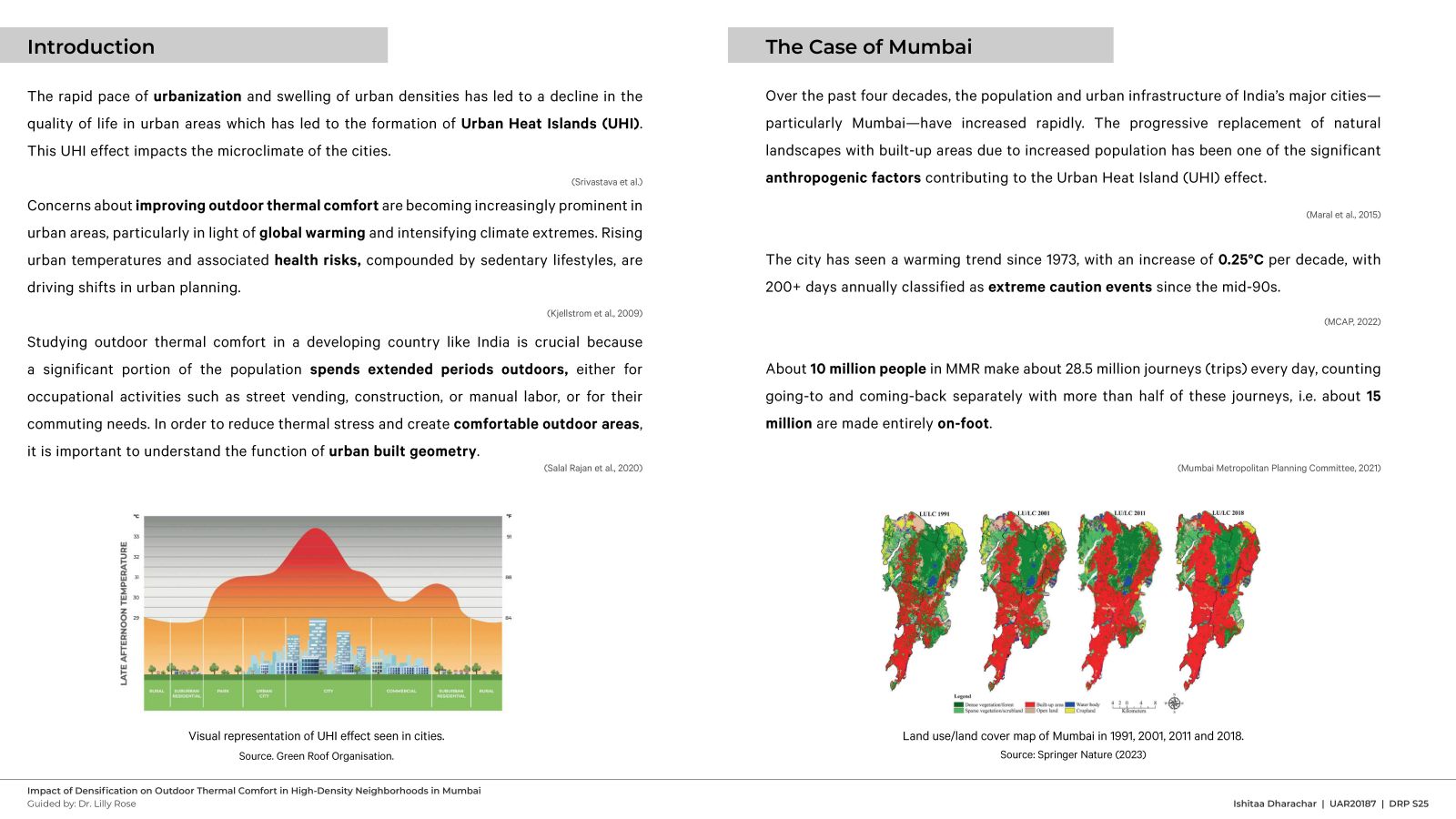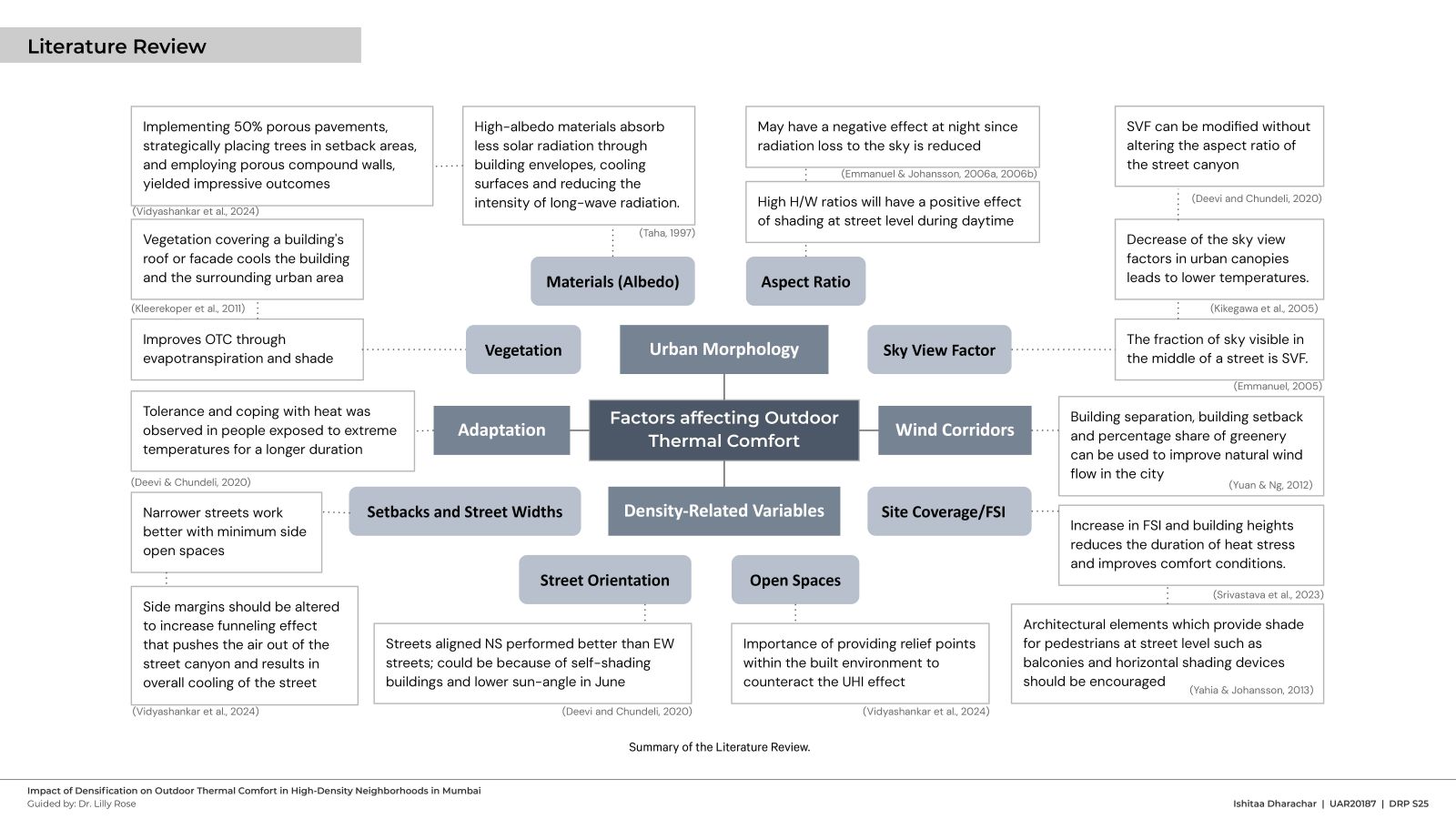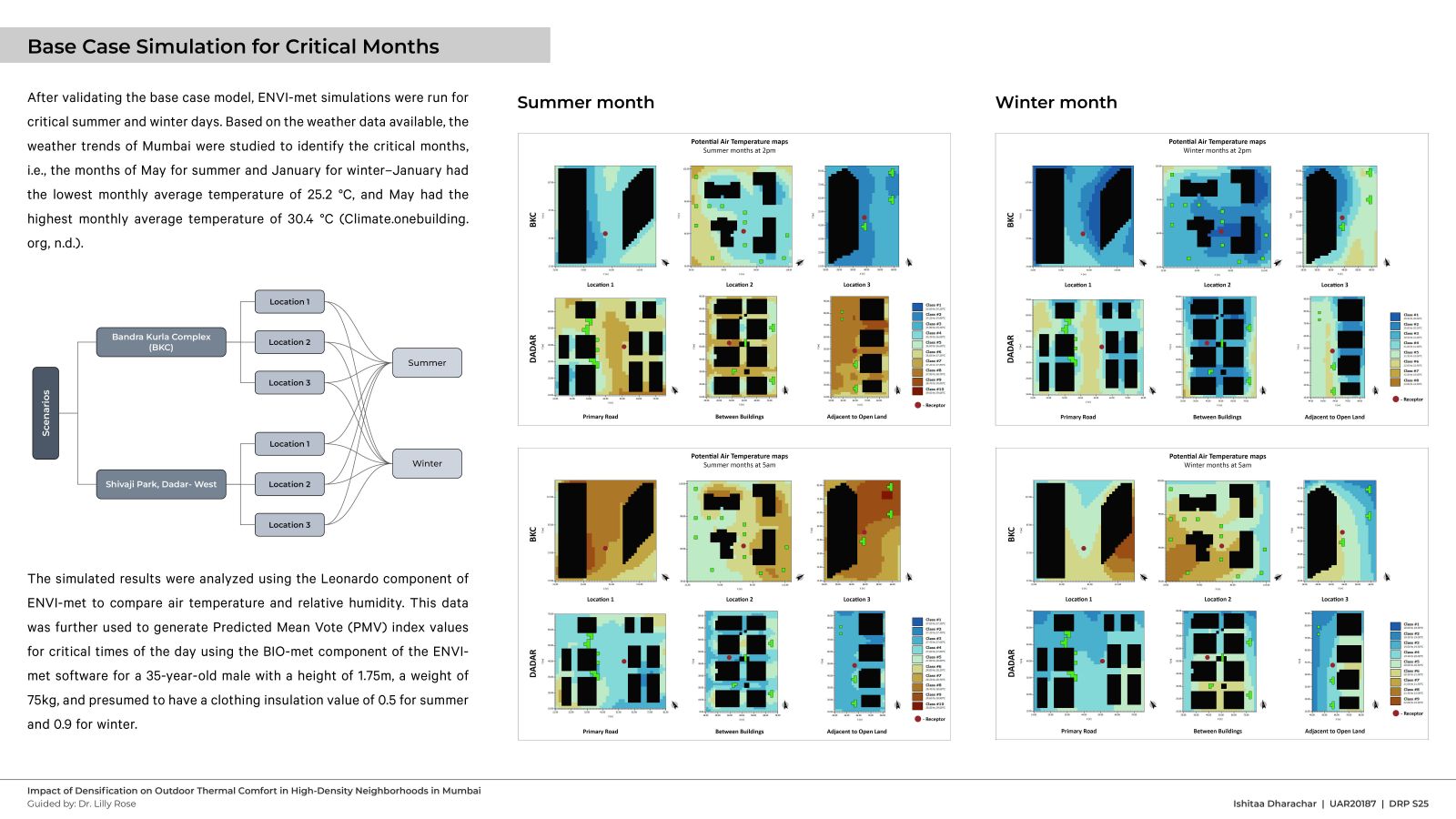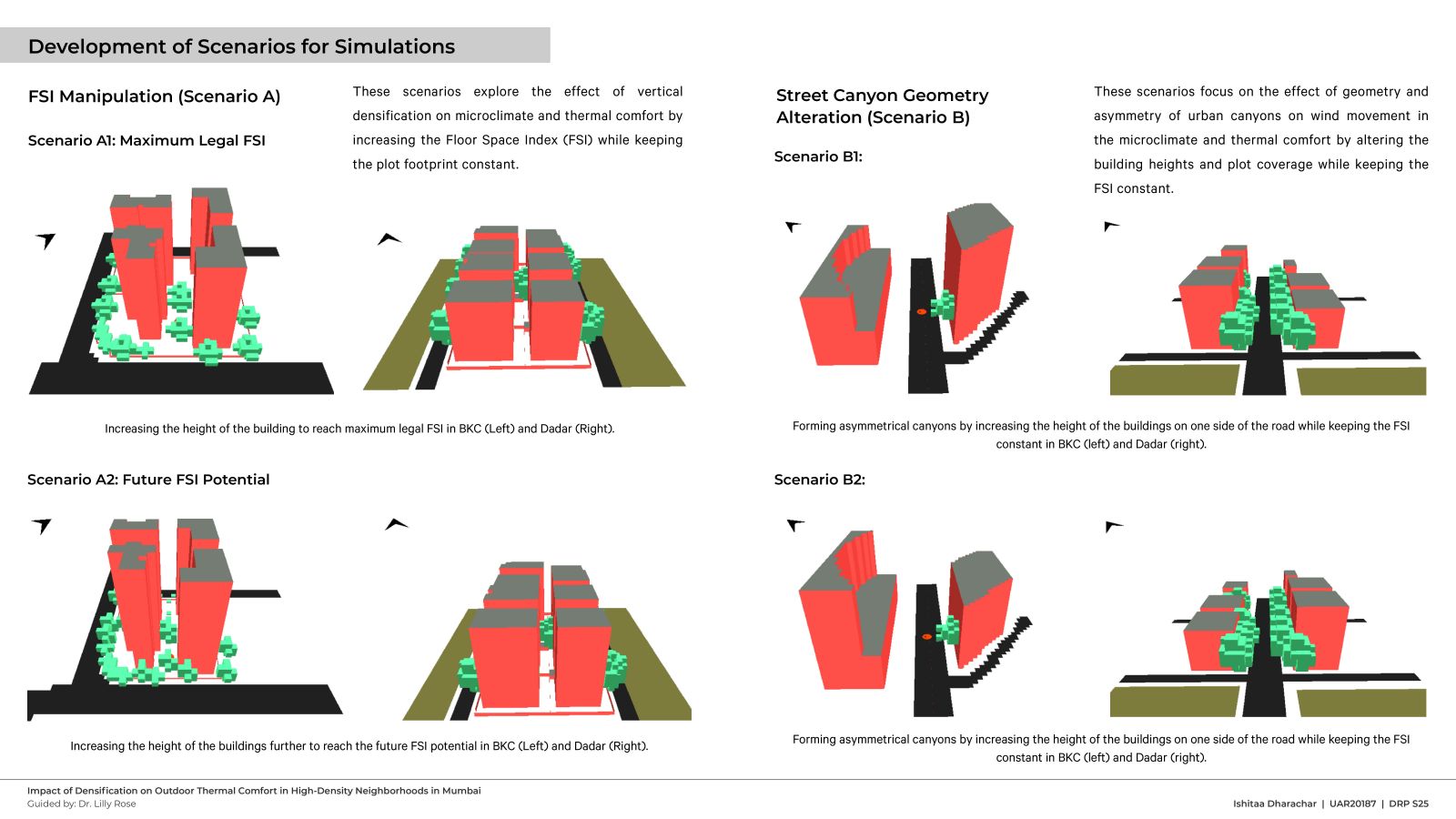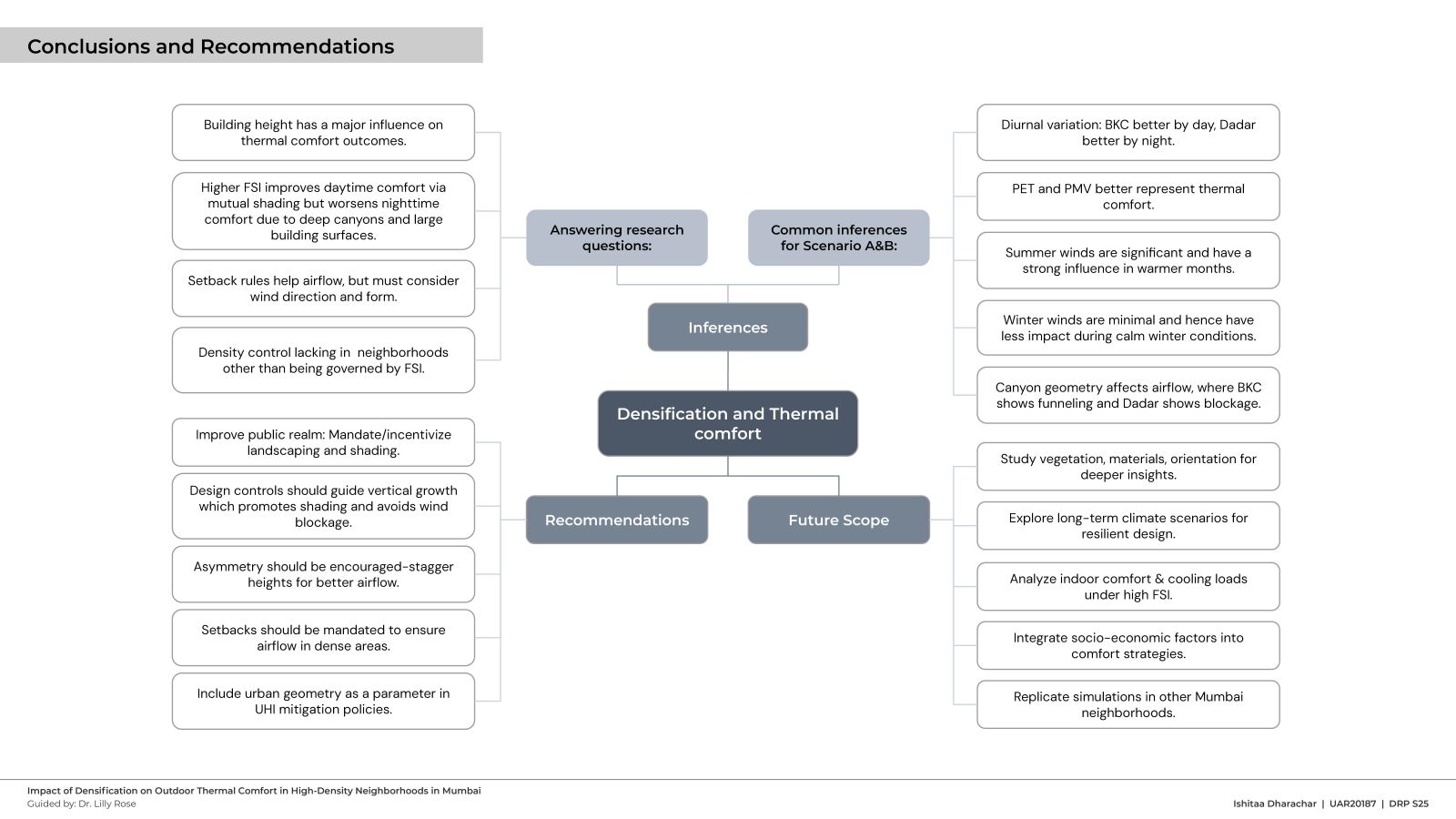Your browser is out-of-date!
For a richer surfing experience on our website, please update your browser. Update my browser now!
For a richer surfing experience on our website, please update your browser. Update my browser now!
The Urban Heat Island (UHI) effect poses growing challenges for thermal comfort, climate extremes, and health risks, particularly in rapidly densifying cities like Mumbai. With its constantly increasing population and consequent construction and development to accommodate them, Mumbai is especially vulnerable to UHI impacts. This study examines the impact of densification on outdoor thermal comfort in two contrasting neighborhoods: the planned high-rise Bandra Kurla Complex (BKC) region and the tradtionally dense Dadar-West. On-site measurements were used to establish baseline conditions in three locations in each neighborhood. The study evaluates the effects of varying Floor Space Index (FSI) and building arrangements on pedestrian-level comfort by using thermal comfort indices such as PET (Physiological Equivalent Temperature) and PMV (Predicted Mean Vote). Two sets of scenarios were then developed; Scenario Set A, which modifies FSI while keeping site coverage constant; and Scenario Set B, which introduces staggered building forms to create asymmetrical canyons with constant FSI. Micro-climate simulations were conducted using ENVI-met for critical summer and winter days to assess diurnal thermal behavior and compare the thermal performance of both neighborhoods. The findings reveal that while BKC shows better results in the daytime hours due to better shading and ventilation, Dadar demonstrates better nighttime performance, likely influenced by its proximity to the coast and shallower street canyons. Additionally, air temperature alone proved insufficient in assessing thermal comfort. The study recommends that in an evergrowing city like Mumbai, regulating vertical growth to optimize shading, promoting varied canyon geometries, and integrating climate-based design into development control policies can help mitigate the UHI effect. The suggestions provided here can be applied to other high-density urban contexts to inform climate-responsive planning and policy.
View Additional Work